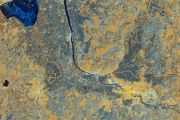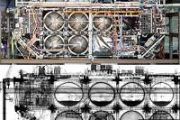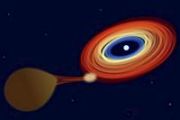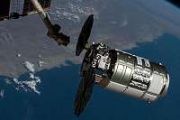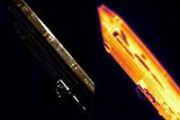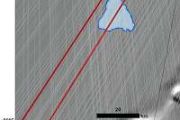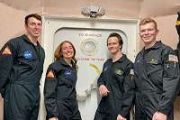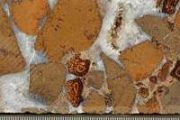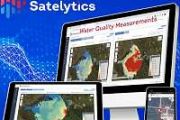
Copernical Team
Less restrictive 'bioburden' rules would make some Mars missions simpler

Study demonstrates lunar composition mapping capabilities of spectrograph instrument

Space hunt begins as Western Australia's Binar-1 mission takes next giant leap

Western Australia's homegrown spacecraft, Binar-1, has been shot into the vacuum of space- deployed into Low Earth Orbit from the International Space Station (ISS), five weeks after blasting off from Cape Canaveral in Florida.
Director of Curtin's Space Science and Technology Centre (SSTC), John Curtin Distinguished Professor Phil Bland, joined SSTC staff and students yesterday to watch a live feed as Binar-1 was placed into the tiny airlock of the Japanese Experiment Module Kibo on the ISS and sent into space.
Professor Bland explained WA's first homegrown spacecraft is now on a journey to make first contact before testing critical systems, collecting data and taking photographs from 400 kilometers above Earth.
"The launch of WA's first homegrown spacecraft on the Space-X rocket was exciting, but this moment and the coming few days are the really crucial points for our Binar Space Program and the team of staff and students who designed and built Binar-1 from scratch," Professor Bland said.
"We can't wait to hear Binar-1's 'first words' from space—that will be the time when we will be able to declare the success of our first space-mission and put us firmly on the path to proving that our technology can deliver.
ESA’s programme of Advanced Research in Telecommunications Systems (ARTES) 4.0
 Video:
00:04:01
Video:
00:04:01
Satellite communication underpins everyday life, enabling fundamental improvements not just in communication, but also in transport, healthcare, safety and security, environmental services and many other industries. ESA and its member states invest more than €500 million every year in the telecommunications sector, supporting the introduction of innovative technologies, space-based systems and solutions boosting European competitiveness.
Watch live: ESA Φ-week

Focusing on the New Space economy and innovations in Earth observation, ESA’s fourth Φ-week kicks off on Monday 11 October. Join us live for two of the main sessions: the Opening session on Monday at 10:30 CEST and the Blending New Space Technologies and Services session on Tuesday at 16:00 CEST.
Father of ERS wins Nobel prize in physics

The Royal Swedish Academy of Sciences has awarded a share of this year’s Nobel Prize in Physics to Klaus Hasselmann in acknowledgment of his contribution to ‘the physical modelling of Earth’s climate, quantifying variability and reliably predicting global warming’. Among Prof. Hasselmann’s long list of outstanding achievements, ESA also recognises him as one of the ‘fathers’ of ESA’s first Earth observation mission, ERS-1, which has been key to understanding our changing planet and which paved the way to modern techniques in observing Earth from space.
Lasers to probe origin of life on a frigid moon and take the space-time pulse of star-shattering collisions

On Saturn's giant moon Titan, liquid methane and other hydrocarbons rain down, carving rivers, lakes and seas in a landscape of frozen water. The complex chemistry on this icy world could be analogous to the period when life first emerged on Earth, or it might yield an entirely new type of life.
NASA's Lucy mission: A journey to the young solar system

NASA's Lucy spacecraft will launch in October 2021 on a 12-year journey to Jupiter's Trojan asteroids. The Lucy mission will include three Earth gravity assists and visits to eight asteroids.
Called "Trojans" after characters from Greek mythology, most of Lucy's target asteroids are left over from the formation of the solar system. These Trojans circle the sun in two swarms: one that precedes and one that follows Jupiter in its orbit of the sun. Lucy will be the first spacecraft to visit the Trojans, and the first to examine so many independent solar system targets, each in its own orbit of the sun.
Studying Jupiter's Trojan asteroids up close would help scientists hone their theories on how our solar system's planets formed 4.5 billion years ago and why they ended up in their current configuration. "It's almost like we're traveling back in time," said aerospace engineer Jacob Englander, who helped design Lucy's trajectory while working at NASA's Goddard Space Flight Center in Greenbelt, Maryland.
First conceived seven years ago as a mission to two asteroids, Lucy expanded to epic proportions thanks to creative engineering and impeccable timing.
LunaNet: Empowering Artemis with communications and navigation interoperability

With Artemis, NASA will establish a long-term presence at the Moon, opening more of the lunar surface to exploration than ever before. This growth of lunar activity will require new, more robust communications, navigation, and networking capabilities. NASA's Space Communications and Navigation (SCaN) program has developed the LunaNet architecture to meet these needs.
LunaNet will leverage innovative networking techniques, standards, and an extensible framework to rapidly expand network capabilities at the Moon. This framework will allow industry, academia, and international partners to build and operate LunaNet nodes alongside NASA. These nodes will offer missions four distinct services: networking, navigation, detection and information, and radio/optical science services.
Networking
Typically, when missions launch into space, their communication down to Earth is reliant on pre-scheduled links with either a space relay or a ground-based antenna. With multiple missions journeying to the Moon, the reliance on pre-scheduled links could limit communications opportunities and efficiencies. LunaNet offers a network approach similar to the internet on Earth, where users maintain connections with the larger network and do not need to schedule data transference in advance.
First European map of the insulating effect of forests
 To cool off in summer, there's nothing better than a walk in the woods. Trees act as a buffer that cools the air beneath their foliage in summer and warms it in winter. This phenomenon is caused not only by the protection that the forest canopy provides, but also by the transpiration of trees in summer: trees absorb cooler water from the soil, and this water is then transported up to the leaves,
To cool off in summer, there's nothing better than a walk in the woods. Trees act as a buffer that cools the air beneath their foliage in summer and warms it in winter. This phenomenon is caused not only by the protection that the forest canopy provides, but also by the transpiration of trees in summer: trees absorb cooler water from the soil, and this water is then transported up to the leaves, 







